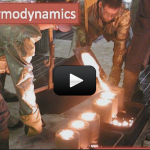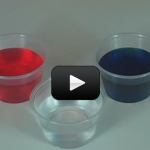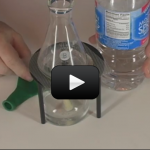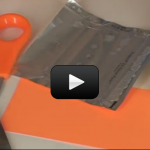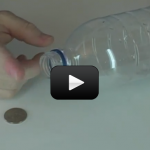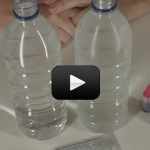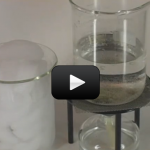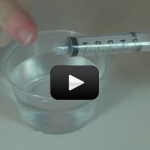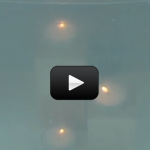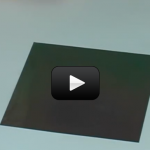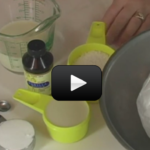“I’m too cold. Get me a sweater!”
“This soup’s too hot!”
“Phew, I’m sweating.”
“Yowtch, that pan handle burned me!”
If you’ve ever made any of the above comments, then you were talking about thermal energy. Very clever of you, don’t you think? Thermal energy is basically the energy of the molecules moving inside something. The faster the molecules are moving, the more thermal energy that something has. The slower they are moving, the less thermal energy that something has.
I’m sure at some point you’ve said, “Wow, my internal thermal energy is way high! I need a liquid with a low thermal energy.” What…you’ve never said that?! Oh, wait. I bet it sounded like this when you said it, “Wow, I’m hot! I need a cool drink.” Whenever we talk about the temperature of something we are talking about its thermal energy. Let’s get started by watching this video:
I’m sure at some point you’ve said, “Wow, my internal thermal energy is way high! I need a liquid with a low thermal energy.” What…you’ve never said that?! Oh, wait. I bet it sounded like this when you said it, “Wow, I’m hot! I need a cool drink.” Whenever we talk about the temperature of something we are talking about its thermal energy. Let’s get started by watching this video:
Objects whose molecules are moving very quickly are said to have high thermal energy or high temperature. The higher the temperature, the faster the molecules are moving. You may remember that temperature is just a speedometer for molecules.
You may have asked yourself the question, “So, if everything is made of molecules, and these molecules are often speeding up and slowing down…what happens to the stuff these molecules are are made of if they change speed a lot? Will my kitchen table start vibrating across the room if the table somehow gets too hot?” No, it’s pretty unlikely that your table will begin jumping around the room, no matter how hot it gets. However, some interesting things do happen when molecules change speeds.
You can get started by watching this video, and afterward either read more about it or start your experiments!
You may have asked yourself the question, “So, if everything is made of molecules, and these molecules are often speeding up and slowing down…what happens to the stuff these molecules are are made of if they change speed a lot? Will my kitchen table start vibrating across the room if the table somehow gets too hot?” No, it’s pretty unlikely that your table will begin jumping around the room, no matter how hot it gets. However, some interesting things do happen when molecules change speeds.
You can get started by watching this video, and afterward either read more about it or start your experiments!
Scientific Concepts:
- The terms hot, cold, warm etc. describe what physicists call thermal energy.
- Thermal energy is how much the molecules are moving inside an object.
- The faster molecules move, the more thermal energy that object has.
- There are three different scales for measuring temperature. Fahrenheit, Celsius and Kelvin.
- Temperature is basically a speedometer for molecules. The faster they are wiggling and jiggling, the higher the temperature and the higher the thermal energy that object has.
- Your skin, mouth and tongue are antennas which can sense thermal energy.
- There are four states of matter: Solid, liquid, gas and plasma.
- Solids have strong, stiff bonds between molecules that hold the molecules in place.
- Liquids have loose, stringy bonds between molecules that hold molecules together but allow them some flexibility.
- Gasses have no bonds between the molecules.
- Plasma is similar to gas but the molecules are very highly energized.
- Materials change from one state to another depending on the temperature and these bonds.
- Changing from a solid to a liquid is called melting.
- Changing from a liquid to a gas is called boiling, evaporating, or vaporizing.
- Changing from a gas to a liquid is called condensation.
- Changing from a liquid to a solid is called freezing.
- All materials have given points at which they change from state to state.
- Melting point is the temperature at which a material changes from solid to liquid.
- Boiling point is the temperature at which a material changes from liquid to gas.
- Condensation point is the temperature at which a material changes from gas to liquid.
- Freezing point is the temperature at which a material changes from liquid to gas.

